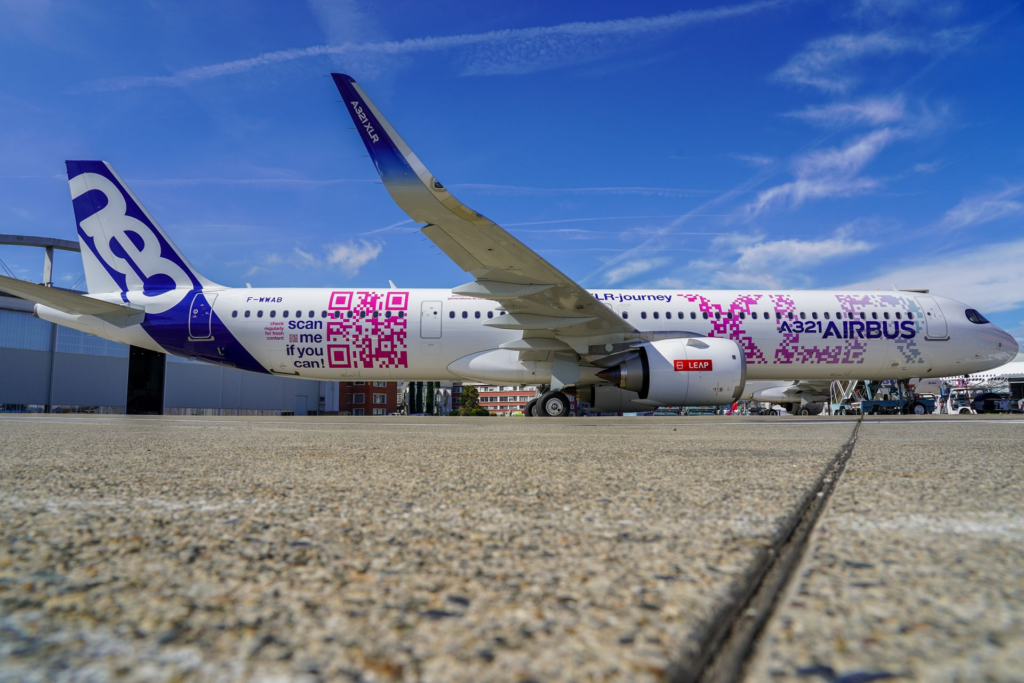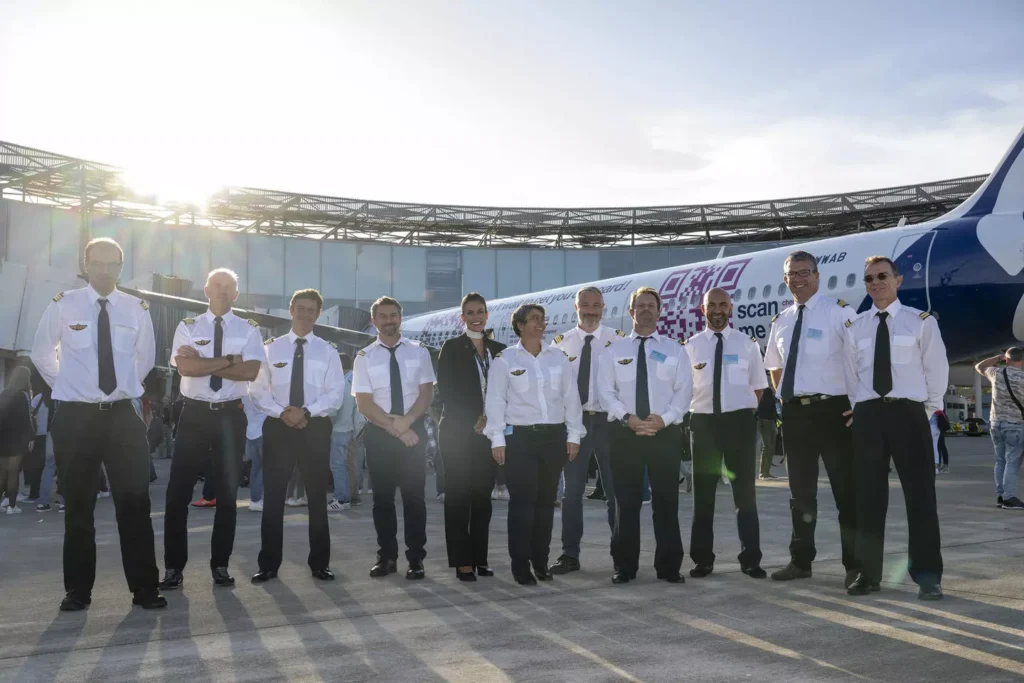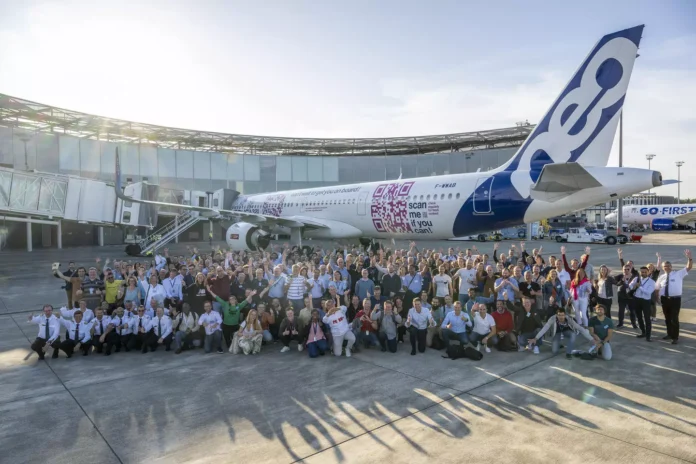This was a significant milestone on the path to certification. On the 5th of October, an A321XLR test aircraft conducted its passenger experience flight under typical airline operating conditions. Onboard, 200 Airbus employees were among the first to experience the comfort of the A321XLR in simulated real service conditions before it enters service in 2024.
On Thursday, 5th October, the A321XLR successfully completed its ‘early passenger flight’ demonstration with 167 employees playing the role of passengers. There were also 22 experts and 11 Airbus Flight Test and cabin crew members on board.
The test aircraft MSN11080 took off from Toulouse at 11:14 am and landed at 5:26 pm after a six-hour and 12-minute flight around Europe. The A321XLR was powered with 30% Sustainable Aviation Fuel, showing a commitment to achieving the aviation sector’s emissions reduction goals, including in Airbus flight test activities. It’s worth noting that all Airbus aircraft today are already certified to fly with up to 50% sustainable aviation fuel on board.
By assessing passengers’ perceptions of cabin comfort, the passenger flight contributes significantly to verifying and validating the A321XLR, ensuring it’s fully ready for customer service in 2024. The flight also allows Airbus to fine-tune cabin procedures and evaluate the cabin environment and systems while the aircraft is in flight.

Airbus employees played the role of passengers during the flight.
They were asked to provide feedback on the visual aspects of the cabin, temperature, and noise levels. They also tested various cabin systems, including air conditioning, lighting, galleys, electrics, washrooms, and water waste systems. Additionally, ergonomic aspects were evaluated, such as the ease of loading and unloading the new overhead bins.
In addition to the perception survey, the 22 experts on board took the opportunity to measure acoustic levels and cabin temperature directly. Crew noise exposure was recorded, especially around the main entrance door area. The new Airspace cabin elements were also tested for vibrations or resonance during different flight phases.
Hans-Gerhard Giesa, a Human Factors senior expert at the cabin & cargo team in Hamburg, Germany, explained, “It will be interesting to compare the technical data we captured during the flight with human perception of these parameters. I hope all the measurements will give us good results, and now we have a lot of data to analyze to see if the systems are working as expected.”

The 167 Airbus employees on board were part of the A321XLR program in France, Germany, Spain, and the UK. They included Blanca Martinez Gallar, an Aerodynamics Engineer in Getafe, Spain, who shared her excitement, saying, “When I learned that I was selected for this flight, I was very happy and proud to be one of the first A321XLR passengers and one of the few selected from all the Airbus departments of Aerodynamics. I worked hard on this aircraft last year, participating in both high-speed and low-speed performance flight test campaigns for both the CFM and Pratt & Whitney engines, so it’s quite an emotional experience to fly on the A321XLR. As a passenger, I would say the A321XLR is a very comfortable and quiet aircraft. It was also my first flight in business class, so I was really impressed. I really enjoyed this moment.

Nicolas Moyon, a Mechanics operator from Airbus Atlantic in Montoir de Bretagne, France, was also one of the selected passengers. He expressed his excitement about being on board, as he had missed his chance to attend the A321XLR’s first flight last year. He appreciated the diversity of the Airbus team on board, working in different functions and locations, including engineers, operators, and support functions. He remarked, “Wherever we are, we are all very proud to contribute to this new-born aircraft.”
Jim Fawcett, the Lead Flight Test Engineer who had been part of the A321XLR’s entire route proving campaign, mentioned, “We had a really great time. It’s always interesting to share these moments with our colleagues and to learn more about their job. It’s also a great opportunity for us to show how we are working. I think a lot of our colleagues discovered what it is like to be on a test flight, so it’s a very good experience for all of us.”

With this new flight test, the A321XLR’s intensive certification testing is progressing towards the goal of achieving Type Certification followed by entry into service in 2024.
The A321XLR is the next step in the evolution of the single-aisle A320neo Family, meeting market demand for increased range and payload on longer routes. The A321XLR will deliver an unprecedented range for single-aisle aircraft, of up to 4,700 nautical miles (8,700 km), with 30% lower fuel consumption per seat compared to previous-generation aircraft, as well as reduced NOx emissions and noise.
To date, the A320neo Family has accumulated more than 9,700 orders from over 130 customers worldwide, with more than 500 A321XLR orders from over 20 customers.
Also read: https://aerohubindia.com/breaking-records-airbus-di-10297-aircraft-delivered-worldwide/






